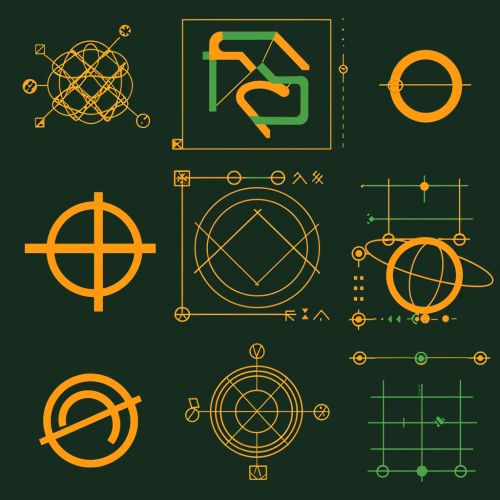Ring theory: Difference between revisions
No edit summary |
No edit summary |
||
| Line 5: | Line 5: | ||
A ring is a set R equipped with two binary operations, addition and multiplication, that satisfy certain axioms. These axioms include associativity of addition and multiplication, distributivity of multiplication over addition, and the existence of an additive identity and additive inverses. Some rings also have a multiplicative identity, but this is not required in the general definition. | A ring is a set R equipped with two binary operations, addition and multiplication, that satisfy certain axioms. These axioms include associativity of addition and multiplication, distributivity of multiplication over addition, and the existence of an additive identity and additive inverses. Some rings also have a multiplicative identity, but this is not required in the general definition. | ||
[[Image:Detail-77739.jpg|thumb|center|A set of mathematical symbols and equations representing the operations in a ring.]] | [[Image:Detail-77739.jpg|thumb|center|A set of mathematical symbols and equations representing the operations in a ring.|class=only_on_mobile]] | ||
[[Image:Detail-77740.jpg|thumb|center|A set of mathematical symbols and equations representing the operations in a ring.|class=only_on_desktop]] | |||
== Types of Rings == | == Types of Rings == | ||
Latest revision as of 12:46, 7 May 2024
Introduction
Ring theory is a branch of abstract algebra that studies algebraic structures known as rings. The concept of a ring was first formulated by mathematician Richard Dedekind in 1882. The theory has applications in various fields of mathematics, including number theory, algebraic geometry, and combinatorics.
Definition
A ring is a set R equipped with two binary operations, addition and multiplication, that satisfy certain axioms. These axioms include associativity of addition and multiplication, distributivity of multiplication over addition, and the existence of an additive identity and additive inverses. Some rings also have a multiplicative identity, but this is not required in the general definition.


Types of Rings
There are several types of rings, each with unique properties and characteristics.
Commutative Rings
In a commutative ring, the multiplication operation is commutative, meaning that the order in which elements are multiplied does not affect the result. The set of integers is an example of a commutative ring.
Noncommutative Rings
In a noncommutative ring, the multiplication operation is not necessarily commutative. Matrix rings are examples of noncommutative rings.
Integral Domains
An integral domain is a commutative ring in which the product of any two nonzero elements is nonzero. This property is known as the cancellation law.
Division Rings and Fields
A division ring is a ring in which every nonzero element has a multiplicative inverse. If the multiplication operation is also commutative, the division ring is known as a field.
Ring Homomorphisms and Isomorphisms
A Ring homomorphism is a function between two rings that preserves the ring operations. If a ring homomorphism is bijective, it is called a ring isomorphism, and the two rings are said to be isomorphic.
Ideals and Quotient Rings
An ideal in a ring is a subset that is closed under addition and under multiplication by any element of the ring. Given an ideal I in a ring R, one can construct a quotient ring R/I, which has applications in various areas of mathematics.
Applications of Ring Theory
Ring theory has many applications in other areas of mathematics. For example, in number theory, the concept of a ring is used to study integer solutions to equations. In algebraic geometry, rings of polynomials are used to study geometric shapes. In combinatorics, ring theory is used to study the structure of combinatorial objects.
